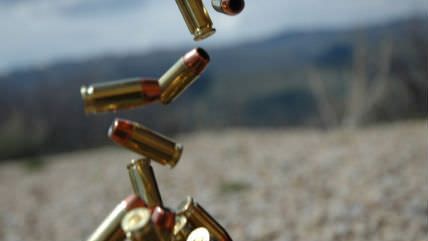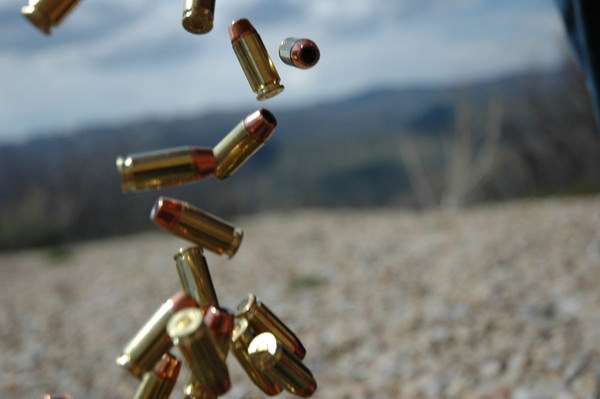The Right Way to Combat Gun Violence
Most gun control ideas are irrelevant or impossible.

Public policy is a lot like math: No matter what the problem, the wrong answers are far more numerous than the right ones. This is particularly true on the subject of mass shootings and other firearms violence, which have stimulated a new fervor for barking up the wrong tree.
Many liberals think the answer to mass shootings and street crime lies in stricter gun regulation: banning "assault weapons," limiting the capacity of magazines or, in their unrestrained moments, adopting ultra-stringent laws like those in Britain or Australia.

But most of these ideas are irrelevant or impossible. Even if the Second Amendment didn't prevent it, Americans would never stand for a near-total ban on ownership of semiautomatic weapons, a la Australia, or of handguns, as in Britain. You might as well expect Nebraska to build 300 miles of oceanfront beaches.
Outlawing "military-style" guns would be a waste of time, since other weapons of identical capabilities would remain available. A limit on magazine capacity wouldn't impede street thugs, who don't need to fire 30 rounds to accomplish their tasks, or even mass shooters, who typically bring multiple guns or magazines.
The problem with most gun control laws is that they impose a burden on the law-abiding that lawbreakers can usually evade. What is needed is an approach that focuses tightly on altering the behavior of criminals. There are proven steps that can hobble the dangerous without penalizing the harmless.
What works in preventing violent crime? One remedy is simple, though not cheap: more police on the streets. This may look like a Blinding Flash of the Obvious, but it's not. Among criminologists, it was once commonly assumed, based on actual research, that beefing up patrols would make no difference.
Today, the evidence points conspicuously in the opposite direction. Jens Ludwig, who directs the Crime Lab at the University of Chicago, says, "The COPS program launched in the 1990s under President Clinton helped contribute to the crime drop we saw in that decade." Nationally, it increased the number of police by more than 80,000.
New York City added 7,000 uniformed officers in the 1990s, and its numbers are still well above where they started. Result: a stunning 81 percent reduction in homicides since 1990. Last year, the city had fewer murders than any year since 1963. In January, it went 10 days without a single homicide.
Having plenty of law enforcement personnel is just part of the battle; the other part is using them effectively. What appears to have worked in New York -- and, later, in Chicago -- is swarming crime "hot spots" with cops for days or weeks, forcing criminals to mind their manners. This approach "almost certainly made a substantial contribution in New York," writes criminologist Franklin Zimring, author of "The City That Became Safe."
It was once thought that when cops moved into an area, crooks would merely move to another one. It turns out that migration is not always an attractive option. So a crime prevented today may be a crime that is never committed.
Chicago also had some luck with a joint federal-city operation, called Project Safe Neighborhoods. It zeroed in on ex-convicts, with the goal of dissuading them from carrying guns, using a carrot-and-stick approach. The stick was federal prosecution carrying long sentences with no parole in faraway prisons; the carrot was meetings where offenders were offered help getting shelter, job training, and education.
In areas where PSN was implemented, homicide rates plunged. In the rest of the city, they barely budged. Ex-offenders who were required to take part in round-table meetings with police, community representatives and service providers were nearly 30 percent less likely than others to end up back in prison.
Another method of catching thugs with guns, says Ludwig, is to offer significant cash rewards to tipsters -- $500 or $1,000. This approach would not only produce more arrests of felons and teens but also strongly discourage them from illegally carrying weapons. An action that today may generate respect or fear -- displaying a handgun to friends or rivals -- would suddenly carry a serious risk of prison time.
If we hope to reduce gun crime, the answer doesn't lie in broad laws that mostly affect people who pose no threat. It lies in targeting the criminals. Most gun control measures involve rearranging the haystack. What these initiatives do is locate the needles.


Show Comments (89)